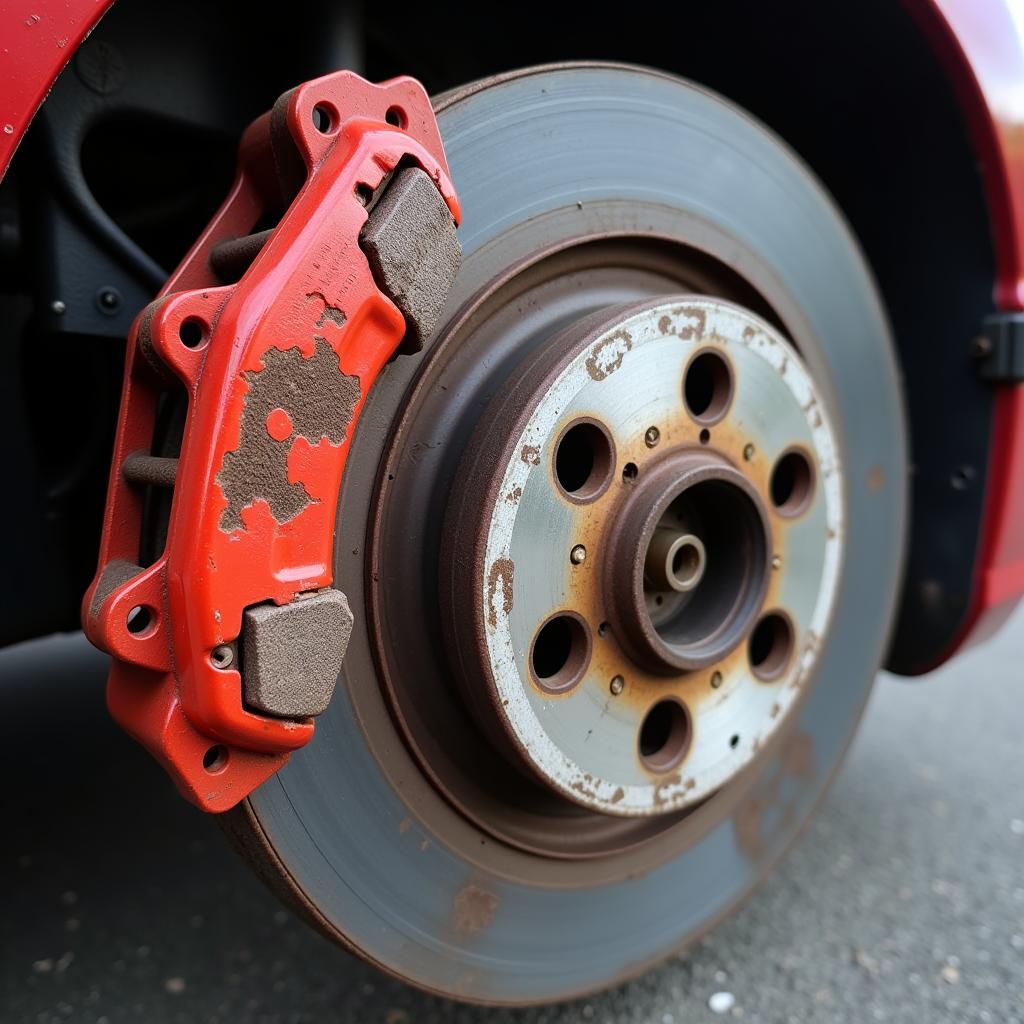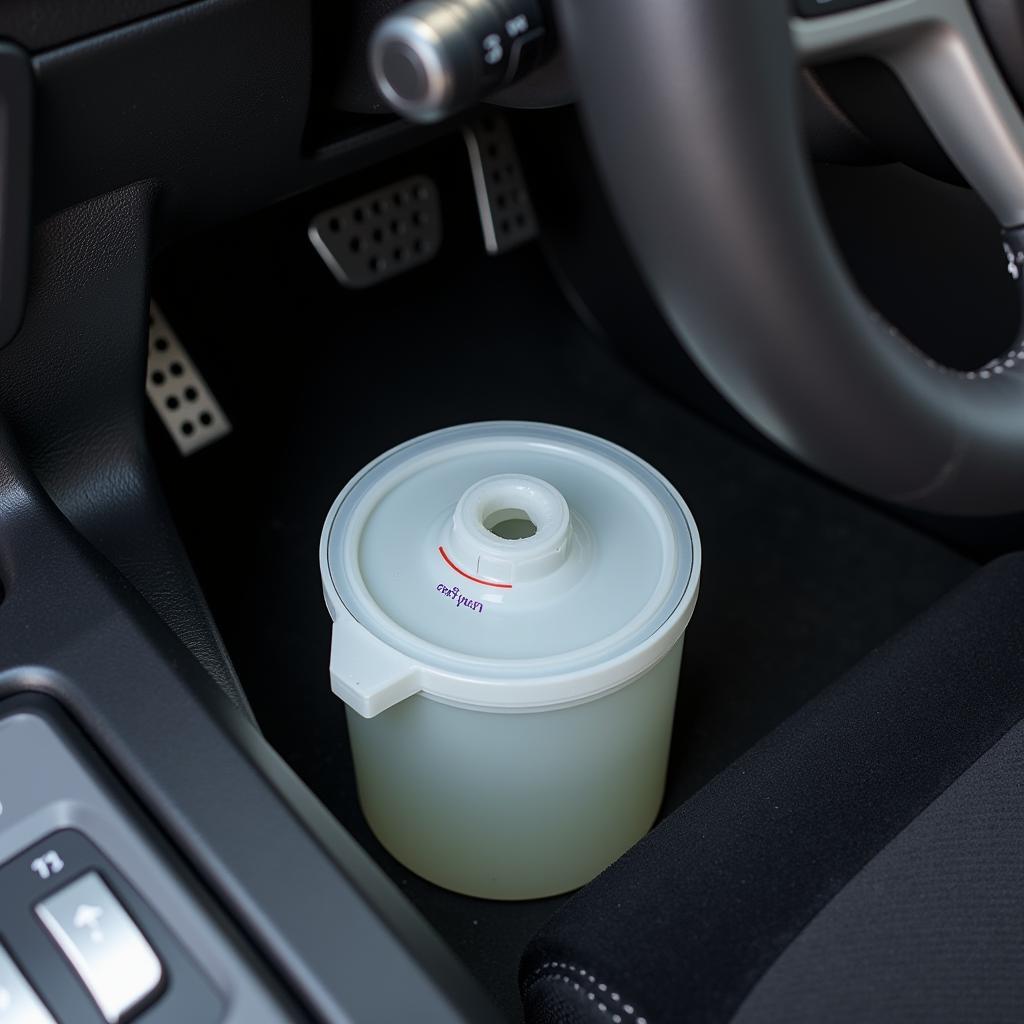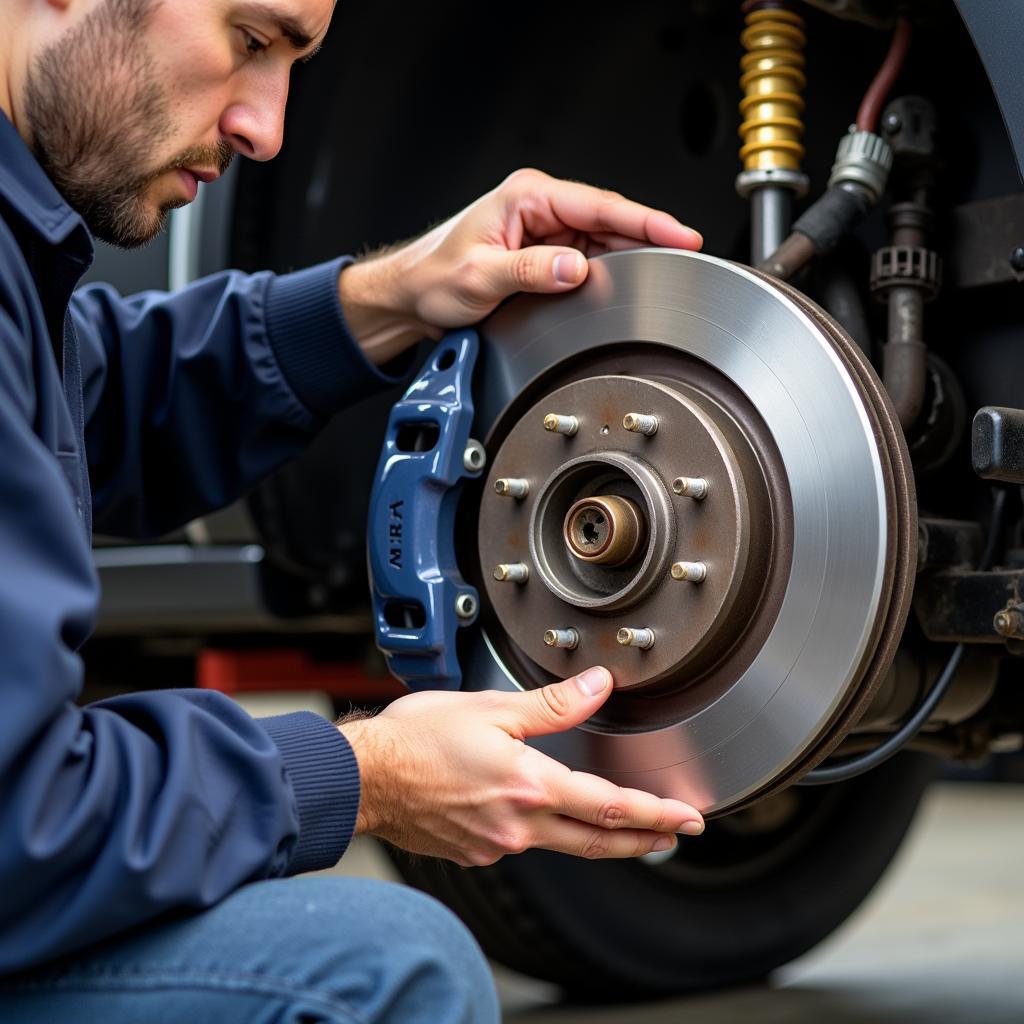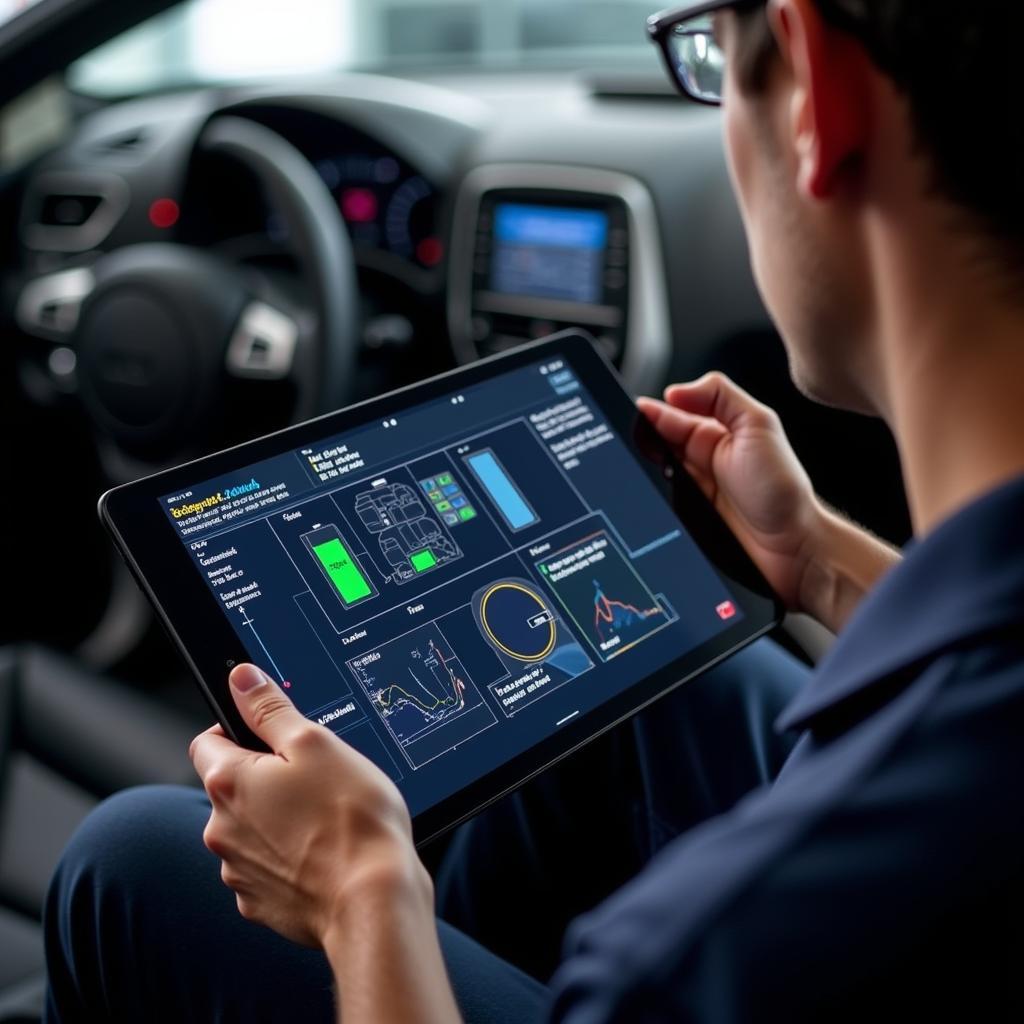A glowing brake light warning sign on your dashboard is a clear signal that something’s not right with your car’s braking system. While it might seem like a minor inconvenience, ignoring this warning could jeopardize your safety and that of others on the road. This comprehensive guide will delve into the common causes of a brake light warning sign, help you understand its implications, and provide a step-by-step approach to diagnose and potentially resolve the issue.
Decoding the Brake Light Warning Sign
Your car’s brake warning light is designed to illuminate for two primary reasons:
-
Activated Parking Brake: The simplest explanation is that you’ve left your parking brake partially or fully engaged. Before panicking, check if releasing the parking brake turns off the warning light.
-
Brake System Malfunction: If the light persists even after disengaging the parking brake, it indicates a potential issue with your braking system. This could range from worn-out brake pads to more complex problems with the hydraulic system or brake fluid levels.
Common Causes of a Brake Light Warning Sign
Understanding the potential culprits behind a brake light warning sign is the first step towards a solution. Here are some common causes:
1. Worn Brake Pads
 Worn Brake Pads
Worn Brake Pads
Brake pads are your first line of defense when it comes to stopping your vehicle. As you apply the brakes, these pads press against the brake rotors, creating friction to slow down or stop the car. Over time, the friction material on the pads wears down. If they wear down too thin, it can trigger the brake light warning sign.
2. Low Brake Fluid Level
 Low Brake Fluid Level in Reservoir
Low Brake Fluid Level in Reservoir
Your car’s braking system relies on hydraulic pressure created by brake fluid to function correctly. If there’s a leak in the system or the fluid level drops too low, it can hinder the brakes’ ability to generate sufficient pressure, leading to the brake light warning sign.
3. Faulty Brake Light Switch
The brake light switch, located near the brake pedal, is responsible for activating your brake lights when you press the pedal. If this switch malfunctions, it can not only prevent your brake lights from working but also trigger the warning light on your dashboard.
4. ABS Issues
Modern vehicles are equipped with an Anti-lock Braking System (ABS) that prevents the wheels from locking up during hard braking. A problem with the ABS module, wheel speed sensors, or related components can also activate the brake light warning sign.
What to Do When Your Brake Light Warning Sign Comes On
 Mechanic Inspecting Car's Brake System
Mechanic Inspecting Car's Brake System
-
Don’t Panic, but Don’t Ignore It: A brake light warning sign doesn’t always signify immediate danger, but it should never be ignored. Pull over safely when possible and assess the situation.
-
Check Your Parking Brake: Ensure your parking brake is fully disengaged. If the warning light goes off, you’re good to go.
-
Inspect Brake Fluid Level: If the light persists, carefully check your brake fluid level. Refer to your car’s owner’s manual for the location of the brake fluid reservoir and instructions. If the fluid level is low, adding more might temporarily solve the problem, but it’s crucial to have the system inspected for leaks.
-
Seek Professional Help: For anything beyond a simple parking brake issue or topping up brake fluid, it’s best to seek professional help. A qualified mechanic can accurately diagnose the problem using advanced diagnostic tools and recommend the necessary repairs.
Remote Diagnostics and Software Solutions
In today’s technologically advanced automotive landscape, remote diagnostics and software solutions are playing an increasingly vital role in identifying and addressing brake light warning signs. By connecting your car to a specialized software program, qualified technicians can remotely analyze your car’s data, pinpoint the root cause of the problem, and even reprogram certain modules to resolve software-related issues – all without you needing to visit a service center.
Preventing Future Brake Light Warnings
While some brake system issues are unavoidable due to wear and tear, proactive maintenance can go a long way in preventing future brake light warnings. Here are some essential tips:
- Regular Brake Inspections: Have your brakes inspected at least once a year or as recommended in your car’s maintenance schedule.
- Timely Brake Pad Replacement: Don’t wait for your brake pads to wear down completely. Replace them as soon as they reach the minimum thickness specified by the manufacturer.
- Brake Fluid Flush: Brake fluid can absorb moisture over time, reducing its effectiveness. Have your brake fluid flushed and replaced every 2-3 years or as recommended by your car manufacturer.
Conclusion
The brake light warning sign on your dashboard should never be taken lightly. It’s a crucial safety indicator that demands prompt attention. By understanding the common causes, knowing how to respond, and practicing preventative maintenance, you can ensure your braking system remains in top condition, keeping you safe on the road. Remember, when in doubt, always consult a qualified mechanic for a thorough inspection and repair.



